8-10 Moorgate, EC2
Built: 1921-22
Architect: Sir Henry Tanner
Location: Moorgate
Listing: not listed

Like many surviving pre-war City buildings that are not listed, this retained Classical façade is now incorporated into a large, block-sized C21 development. Nonetheless, the character of the original National Bank of New Zealand offices facing Moorgate has been reasonably well preserved, externally.
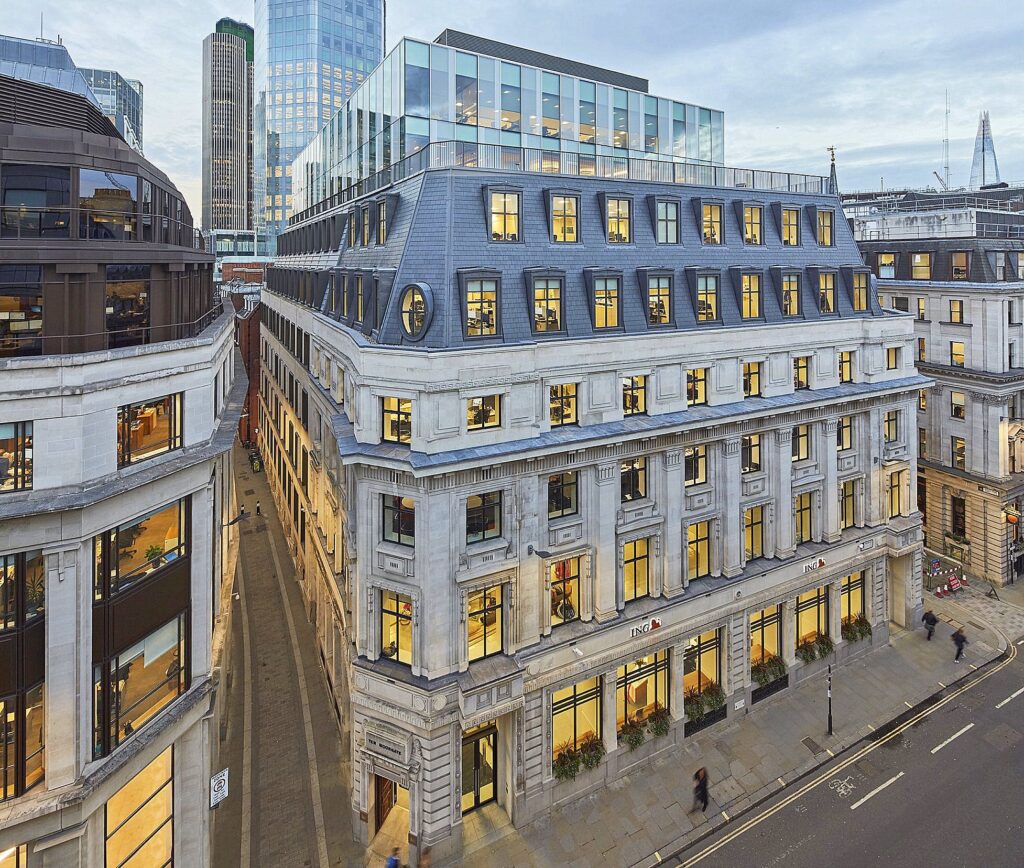
Despite the rather towering (but, thankfully, set back) mansard roof addition and the considerable extension, in mixed modernistic tropes, along King’s Arms Yard and Telegraph Street, the overall composition of the principal aspect of this building retains a strong sense of horizontality. The simplified upright elements on the ground floor and giant pilasters fronting the two intermediate storeys are more than balanced by the orderly sequence of robustly framed windows as well as the projecting principal cornice.
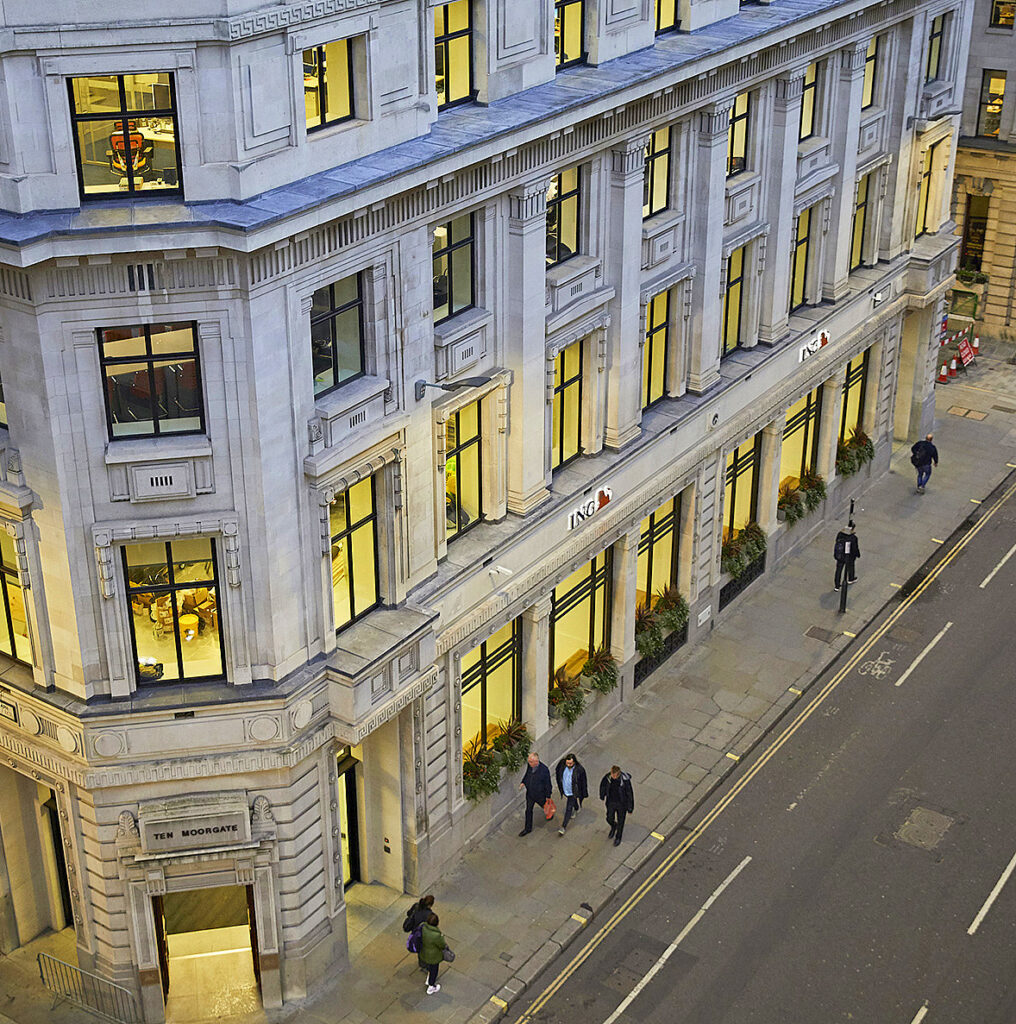
The implementation of the Classically inspired details is blockier and ‘squarer’ than typical of the Edwardian Neoclassicism of 10-15 years earlier. This building therefore references both Continental Jugendstil and emerging Art Deco abstractions of Classical vocabulary. Thus, the presence of such decorative elements as panel mouldings, guttae, banded rustication, Greek scrolls, margents and aedicules does not subtract from the impression of a relatively stripped-down rendition that was becoming more popular in such large-scale buildings in the interwar years.
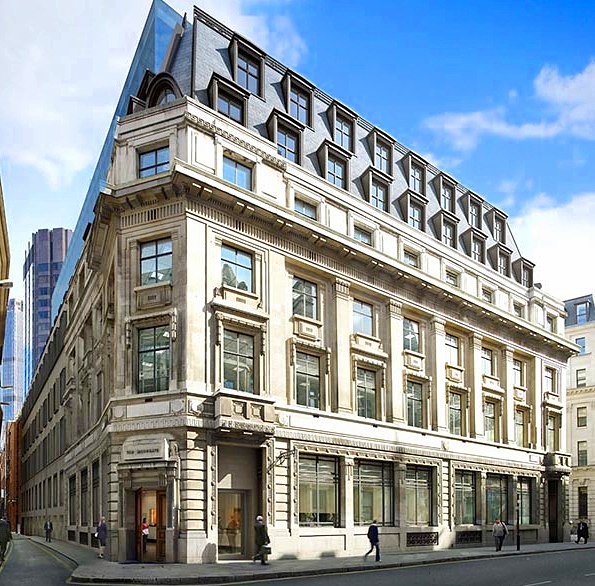
The National Bank of New Zealand, contrary to its name, was not a central or official bank but rather one of the many British overseas banks with head offices in London and their operations largely abroad. It was founded in 1872, with London as its managerial and capital-raising base while business centred initially on Dunedin (New Zealand), later expanding to other major centres like Wellington, Auckland and Christchurch. Among its early shareholders and directors were many prominent New Zealand personalities from both business and government. Lloyds Bank, with which many NBNZ directors were also involved, began acquiring a stake in 1919 and this involvement culminated in the outright purchase of NBNZ in 1966. In 1978, the head office was moved to Wellington, with further mergers and takeovers taking place in the late C20. Lloyds Bank sold its New Zealand business to Australia New Zealand Bank (ANZ) in 2003. Various documents show NBNZ’s London offices being located first on Lombard Street, then Old Broad Street and later on Moorgate where, in 1920-21, they erected this purpose-built edifice.
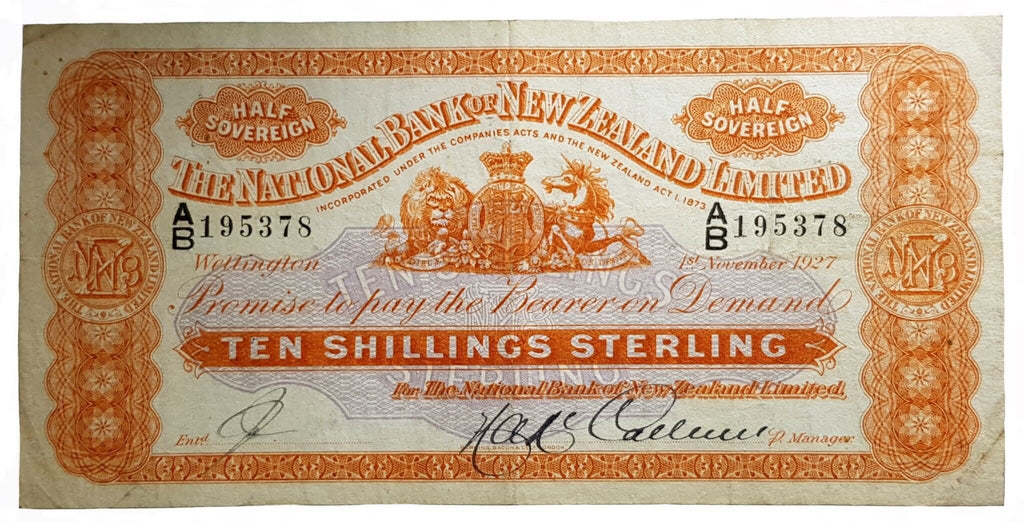
The board minutes (*) of NBNZ contain several discussions regarding these premises which shed useful light on the tenancy and cost aspect of City head offices. The lease cost was estimated at £18,000 pa (including ground rental) to be paid to the City of London Real Property Company. The latter would obtain the head lease from the landlord (the Clothworkers’ livery company) as well as manage the erection of the new building, with construction costs expected to be around £100,000. The NBNZ would only occupy the basement, ground floor and first floor, with the rest being destined to the foreign operations subsidiary of Lloyds Bank and other tenants. Such sub-letting was expected to bring in £9,000 pa – roughly half the lease cost. Henry Tanner’s architect fee was set at £ 7,000. Upon completion, part of the building was rented to the Royal Mail Steam Packet Co, a privately-owned and operated shipping company that received a substantial UK government subsidy to ensure regular, timely delivery of mail to New Zealand and Australia.
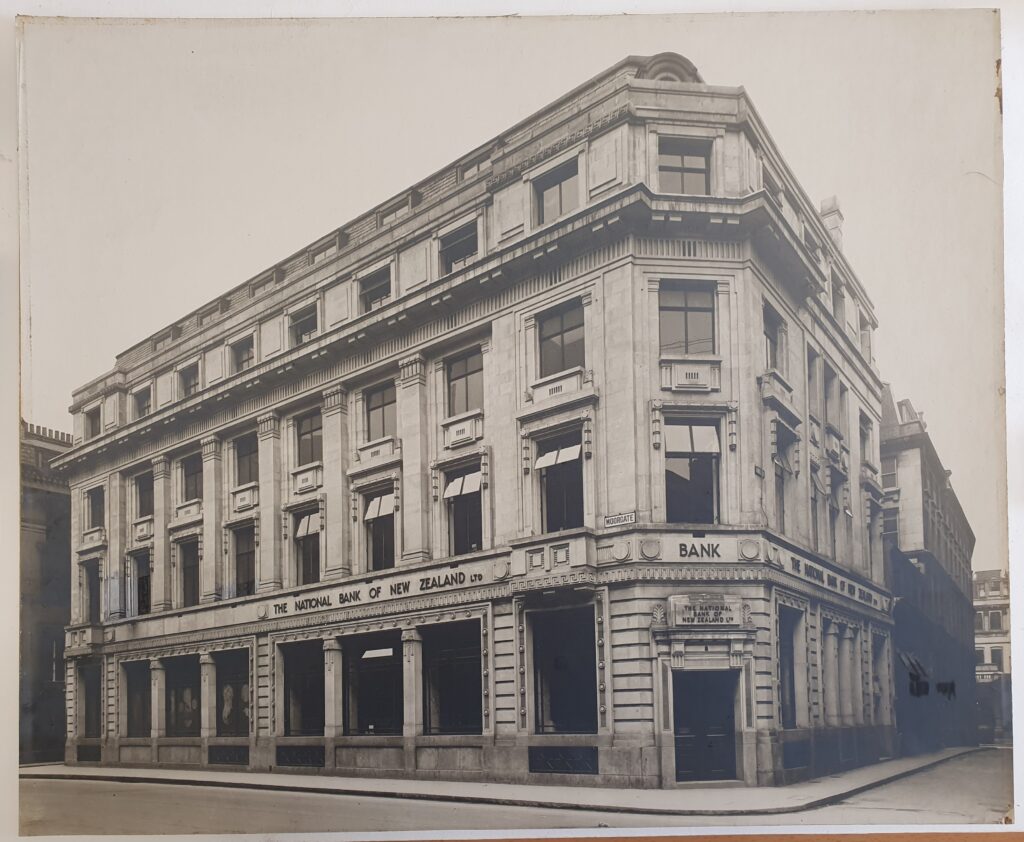
(*) Special thanks to Joanna Newman of the ANZ Bank New Zealand Ltd Archives for her assistance.
